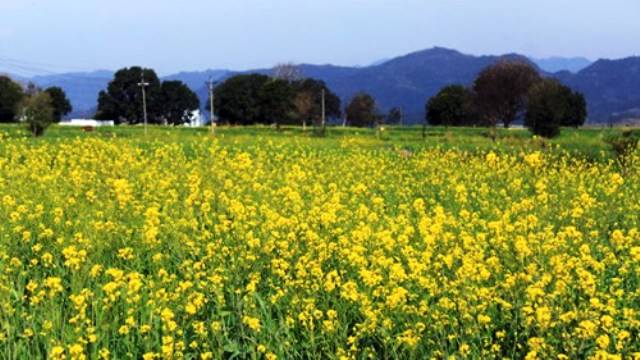
In the hue to increase productivity of mustard many studies and scientific advancements and technologies are coming forth to suffice the needs of our vast population and economic , and in this direction, farmers from several states have claimed superior yields by growing traditional mustard varieties using a new method of cultivation. The system, known as System of Mustard Intensification (SMI) allows resource-poor farmers to use less water and seeds and yet achieve significantly higher yields.
This technology essentially advocates a radically different package of practices, and has earlier been successfully tried in crops like rice and wheat. This technology, which is also known as system of root intensification (SRI), involves planting saplings at a wide distance from each other, using less water and seeds and creating soil conditions which are aerated and microbe-friendly.
The SMI has shown its excellence on the fields in many states. In Umariya district of Madhya Pradesh, the SMI process has yielded between 4 to 5.7 tonnes per hectare of mustard and nearly 10,000 farmers in the district have shifted to this new method of cultivation. The higher yields in Umariya compare with an average yield of 2.6 tonnes per hectare for the genetically modified (GM) DMH-11 mustard variety developed by Delhi University’s Centre for Genetic Manipulation of Crop Plants. Current non-GM average yield of mustard in India is a mere 1.7 tonnes per hectare. The success of using SMI in mustard is not limited to Madhya Pradesh. Farmers in Bihar, Odisha and West Bengal too have tried the technology and reported higher yields. Data collated by non-profit Preservation and Proliferation of Rural Resources and Nature (PRAN) in Gaya district of Bihar showed that mustard yields crossed 4 tonnes per hectare in fields using RP-09 seed variety. These numbers were verified by the government’s agricultural technology management agency (ATMA).
Apart from farmers using SMI, a Rajasthan farmer and breeder has developed a variety known as Sitara Sringar which yields between 3-3.5 tonnes per hectare with a 42% oil content.The variety is registered with the centre’s Protection of Plant Varieties and Farmers Rights Authority and farmers in several districts in Rajasthan are using it now.
The National Bureau of Plant Genetic Resources has listed 664 varieties of mustard in its collection and India needs to promote research and explore the use of SMI on these varieties. New technologies should be explored and practiced prudently with scientific acumen.









